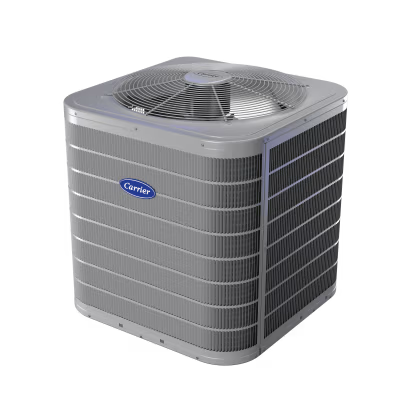What Size HVAC System Does My Home Need?

Hi there! I’m an HVAC technician at US Heating & Air working across the Delmarva Peninsula (that’s the Maryland-Delaware coastal region). I love telling homeowners how choosing the right HVAC unit for their home is critical – just like picking the perfect pair of shoes. Get it too small and you’ll run out of “comfort” breath; get it too big and you’ll waste energy (and money).
In this air conditioning sizing guide, we’ll dive deep into how to find what size HVAC system is right for YOUR home. Think of this as a casual chat with your friendly HVAC expert: I’ll answer all your questions with analogies, stories, and plain-language tips.
Why HVAC Size Matters – The Goldilocks Principle
Have you ever seen someone put on shoes that were two sizes too small? They can’t run properly, right? Now imagine the opposite: a kid wearing giant boots – it’s wasteful and clumsy. It’s the same with HVAC systems. As one expert blog puts it, “just like Goldilocks, your air conditioner can’t be too big or too small”. In other words, it has to be just right.
● Too Small = Running All Day: A system that’s too small will run constantly and still not keep you comfy. You’ll feel like it’s sprinting a marathon, never catching up with the heat. Rooms might stay warm or unevenly cooled. Imagine a marathon runner exhausted before the finish line – that’s an undersized AC.
● Too Large = Short Cycling: A system that’s too big will cool (or heat) your space really fast – but then it turns off, only to turn on again moments later. This on-and-off dance (called short cycling) wastes energy and strains the system. It’s like putting a monster truck engine in a toy car – it’s overkill, and it actually hurts performance and efficiency.
● Just Right = Steady Comfort: The perfect-sized system runs at a smooth, efficient pace. It keeps your home at a steady temperature and humidity level without constantly cranking or cycling. This means fewer energy bills and more consistent comfort.
In short, an HVAC system that’s even slightly off-size can cause big problems: higher energy costs, uneven temperatures, and even premature equipment wear. That’s why we at US Heating & Air treat HVAC sizing as our first priority. On the Delmarva Peninsula, with hot, humid summers and cool winters, getting the size just right is the key to year-round comfort.
Factors That Determine the Right Size HVAC Unit
When I visit homes in Denton, MD or Dover, DE, one of the first things I explain is: HVAC sizing is about more than square footage. If you search for “HVAC size calculator” or “right HVAC unit for my home,” you might see tools or quick charts. Those are a start, but they can’t capture your home’s full story. A real sizing takes into account lots of factors – think of it as a recipe with many ingredients. We consider things like:
● Square Footage & Layout
● Climate Zone & Local Weather
● Insulation & Windows
● Ductwork and Airflow
● Occupancy & Appliances
● Number of Floors & Layout
● Living Habits
HVAC Size Calculators and the Manual J
You may have seen an HVAC size calculator online or a quick “air conditioning sizing guide” that says, for example, “1 ton per 400 sq.ft.” Those tools can be helpful to ballpark things, but I treat them like a rough map. They often ask you for your zip code or climate zone and square footage. For example, a DIY chart might say in our Zone 4 climate (like most of Delmarva) that a 3-ton AC suits a 1,600–2,000 sq.ft. home.
But—and it’s a big but—those calculators often assume “average” insulation, shade, and an average number of occupants. They won’t know if you have 10-foot ceilings, new double-pane windows, or a steam shower. This is where a professional Manual J calculation comes in.
Understanding BTUs and Tons
Let’s demystify some jargon that often comes up in sizing. You’ll hear terms like BTU and ton.
● BTU (British Thermal Unit)
● Ton = 12,000 BTUs/hr
So, in simple terms:
● A 2-ton AC = ~24,000 BTU/hr
● A 3-ton AC = ~36,000 BTU/hr
● A 4-ton AC = ~48,000 BTU/hr
That 3-ton (36,000 BTU) number often comes up for a moderately sized Delmarva home (around 1,800–2,200 sq.ft, depending on insulation and windows).

Our Process at US Heating & Air
So, how do we ensure you get that “Goldilocks fit” for your HVAC? At US Heating & Air on the Delmarva Peninsula, we follow a thorough process:
1. Initial Assessment
2. Home Inspection & Measurement
3. Load Calculation using Manual J guidelines
4. Account for Local Climate
5. Select Carrier Equipment – as a Carrier Certified Dealer, we only install systems we trust
6. Duct Inspection and Cleaning Services
Need Help Choosing? Here’s What to Do Next
If you’re unsure about your current HVAC system or planning to install a new one, let our Carrier-certified team help. We provide:
● A/C Maintenance and New Installations
● Heating System Support
● Air Duct Cleaning
We love what we do – and we love helping Delmarva homes stay comfortable year-round.
Conclusion: Get the HVAC that Fits
FAQs:
What happens if I choose an HVAC system that’s too big?
What’s the cost difference between a 2-ton and 3-ton Carrier unit?
How often should I schedule A/C maintenance?
At least once a year—ideally in the spring before heavy summer use.
